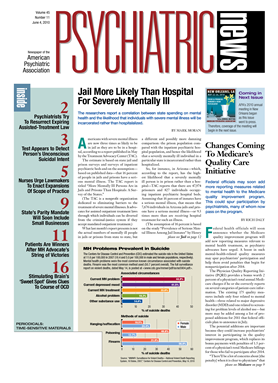The painful memories that accompany posttraumatic stress disorder (PTSD) or other sequelae of traumatic events may someday be subject to interventions that will delete the unhappiness without removing the factual memory.
Current theory holds that memory is unstable at first and then is stabilized (or “consolidated”) over a matter of hours, said researcher Karim Nader, Ph.D., an associate professor of psychology at McGill University in Montreal. When memories are recalled later, they become unstable again and have to be reconsolidated.
Those two moments present chances for intervention, as much research in both animals and humans has shown, Nader said at the annual Amygdala Conference at the Uniformed Services University of the Health Sciences in Bethesda, Md., in April.
The brain contains multiple memory systems that save an event. Different aspects of the event are stored in different parts of the brain, which can operate semiautonomously from each other, said Nader.
For instance, the amygdala is involved in processing the fear and anxiety associated with a traumatic event, while the hippocampus system manages the conscious details of the event.
Hypothetically, that knowledge could someday lead to the ability to affect each aspect separately for research or therapeutic purposes.
At present, cellular memory consolidation theory asserts that short-term memory is unstable, lasts seconds to hours, does not require new RNA or protein synthesis, and can be disrupted by distraction or new information.
Long-term memory is consolidated, stable, and insensitive to disruption, can last up to a lifetime, and requires RNA and protein synthesis. These patterns underlie current memory research.
Rats learn quickly and remember well with classic Pavlovian conditioning, said Nader. “When an audible tone is accompanied once by a foot shock, the rats will freeze in place whenever they later hear the tone alone.”
Research by Joseph LeDoux, Ph.D., and colleagues at New York University found that injecting rats with the antibiotic anisomycin, which inhibits protein synthesis, into the lateral amygdala blocks consolidation of long-term fear memory of the shock.
Nader has shown that the same process occurs during reconsolidation of memory.
When a memory is recalled by repetition of the tone, it becomes vulnerable to loss, change, or strengthening, rather like pulling a file out of a drawer and editing the contents before replacing it.
Experimental manipulation can do that, too. Giving anisomycin when the tone is repeated 24 hours after the tone/shock experience blocks reconsolidation of memory, he said.
However, that effect can be modified with additional training with additional tone/shocks. In those cases, the initial memory remains, and anisomycin has little effect for 30 to 60 days, Nader has found.
“There seem to be constraints on when a memory will and will not undergo reconsolidation based on memory age and strength,” he said. “Reconsolidation blockade reverses the cellular and molecular correlates of long-term memory, consistent with the possibility that targeted representation is lost.”
The beta-blocker propanolol also affects memory consolidation by selectively blocking the emotional response to an event in the amygdala.
However, propranolol must be given systemically within six hours of a traumatic event to reduce the risk of PTSD two to three months later, according to numerous researchers.
Nader and others have studied use of propranolol on reconsolidation of memories, as well. In one double-blind experiment, patients with PTSD were given propranolol during recollection of their traumatic event. Compared with patients given a placebo, those on the beta-blocker recorded significantly lower heart rates and skin conductance, and scored lower on the Impact of Events Scale–Revised.
Furthermore, said Nader, “Regardless of the scores, the subjects reported that taking the drug made them feel better.”
This line of research may have wider implications in psychiatry, he suggested. Both consolidation and reconsolidation of memory occur because of brain plasticity, which also may cause or maintain psychopathologies. A deeper understanding of reconsolidation may someday provide a way to reverse not only PTSD but other mental disorders, he said.

